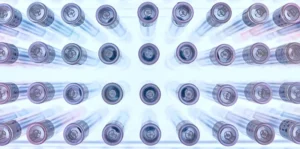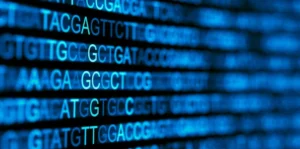AUGUST 10, 2023
Myth or Reality: Can a DNA Test Show Drug Use?

DNA testing has become increasingly popular thanks to its ability to answer questions about paternity, health, relationships, ancestry, and more. With the questions that DNA testing can answer only continuing to expand, many people wonder if it can reveal even more personal information, such as drug use.
Here, you can learn about how DNA testing works, the similarities and differences between DNA and drug testing, and more.
Understanding DNA Testing
DNA testing is a scientific technique that examines a person’s genetic code. A quick overview of some typical DNA testing applications includes:
How Does DNA Testing Work?
DNA testing involves extracting and multiplying DNA from a sample, usually from blood or a buccal swab, and analyzing specific sections of the DNA. DNA analysis is not focused on lifestyle factors like diet or drug use. It instead focuses on the genetic code that defines who you are on a biological level.
Understanding Drug Testing
Drug testing is a procedure designed to detect the presence of drugs or their metabolites in a person’s body. Employers, sports organizations, and legal authorities often require drug testing. While DNA testing focuses on understanding a person’s genetic makeup, drug testing aims to identify recent consumption of specific substances.
Can DNA Testing Show Drug Use?
No, DNA testing is not used to reveal drug use. Though DNA testing can indicate many biological characteristics, it doesn’t offer insight into someone’s habits or recent activities.
The tests use different biomarkers and are administered for unrelated purposes. A person might mistakenly assume that a DNA test could show drug use for many reasons, including:
- Misunderstanding of Genetics: Some individuals might be misinformed about what information DNA holds. Since DNA carries a person’s genetic information, one could assume it also carries information that would identify drug use.
- Confusion with Other Tests: The sample collection methods for both tests can be similar. Sometimes hair is used as the sample source for both DNA and drug testing.
- Association with Legal System: Both drug testing and DNA testing (most often paternity testing) can be court-ordered.
3 Additional Misconceptions About DNA
Some additional misconceptions regarding DNA and DNA testing include:
1. Home DNA Tests Can Be Used in Legal Situations
Misconception: Home DNA tests are legally binding; for example, at-home paternity testing could be used in a court of law.
Why People Think This: Increased accessibility to at-home DNA tests, including pharmacies and online, might lead people to assume that these are equivalent to forensic or legal DNA tests. However, legal DNA tests require specific chain-of-custody procedures that home tests do not.
2. Identical Twins Have Identical DNA
Misconception: Some people assume that the DNA of identical twins is also identical, making it impossible to distinguish between them.
Why People Think This: While identical twins start with nearly identical DNA, small genetic mutations are likely to occur early in the fetus’s development. In very precise forensic or scientific contexts, it is possible to differentiate the DNA of identical twins.
3. DNA Tests Can Reveal Specific Talents or Abilities
Misconception: Some believe DNA tests can pinpoint specific talents, such as musical ability or athleticism.
Why People Think This: While genes can strongly influence predispositions to certain abilities, these traits are complex and difficult to isolate in an individual’s DNA with current technology. Additionally, other factors like education, training, and access to available resources are often more significant.
While the myths surrounding DNA and DNA testing may be enticing, the reality of what DNA testing can and cannot reveal is highly complex and quickly evolving.
About DNA Diagnostics Center (DDC)
DNA Diagnostic Center is the world leader in paternity and relationship testing. We serve healthcare professionals, government agencies, and individuals around the world to determine family relationships with trusted accuracy.
More Questions? Don’t hesitate to call us: we’re here to help!
CALL NOW




